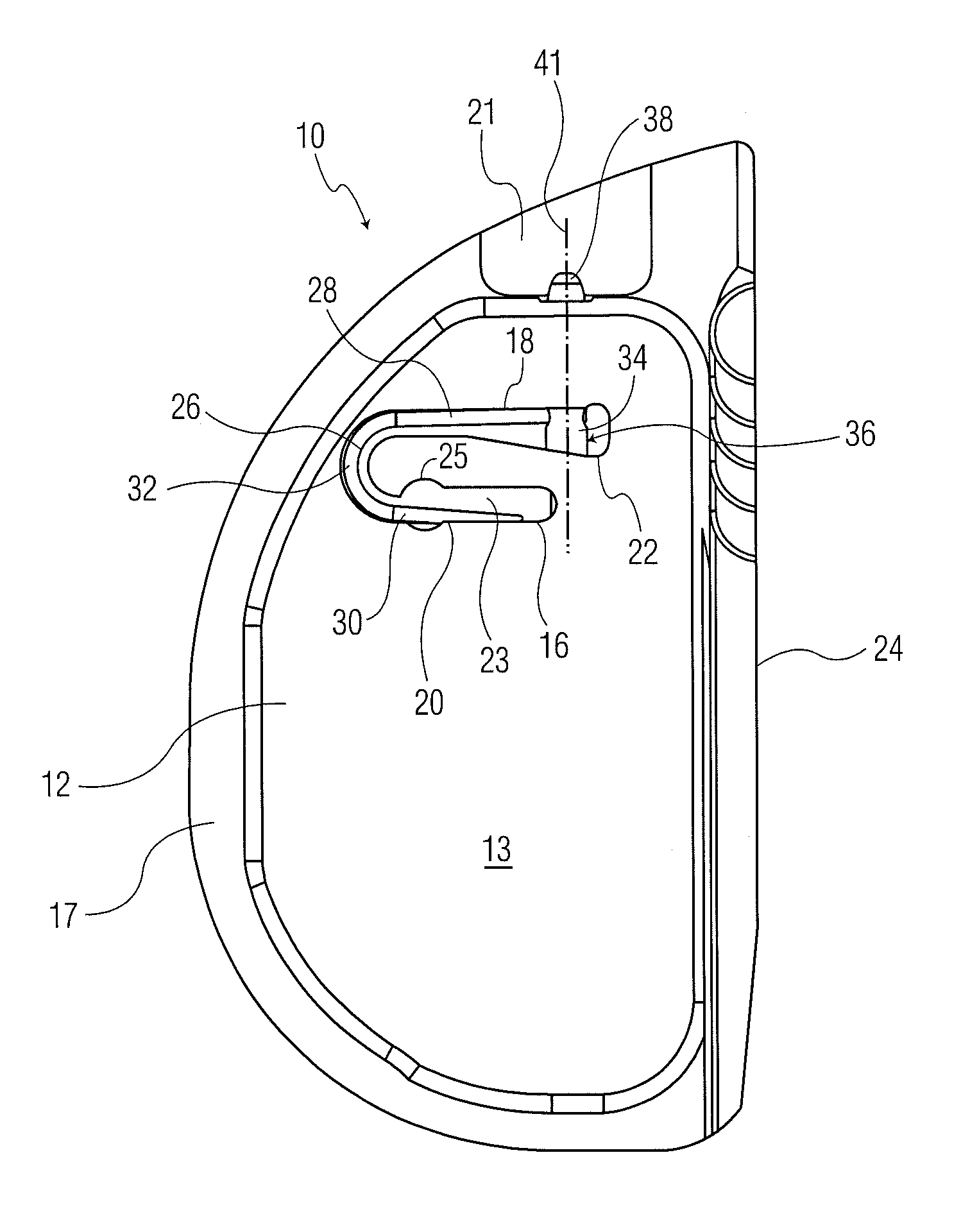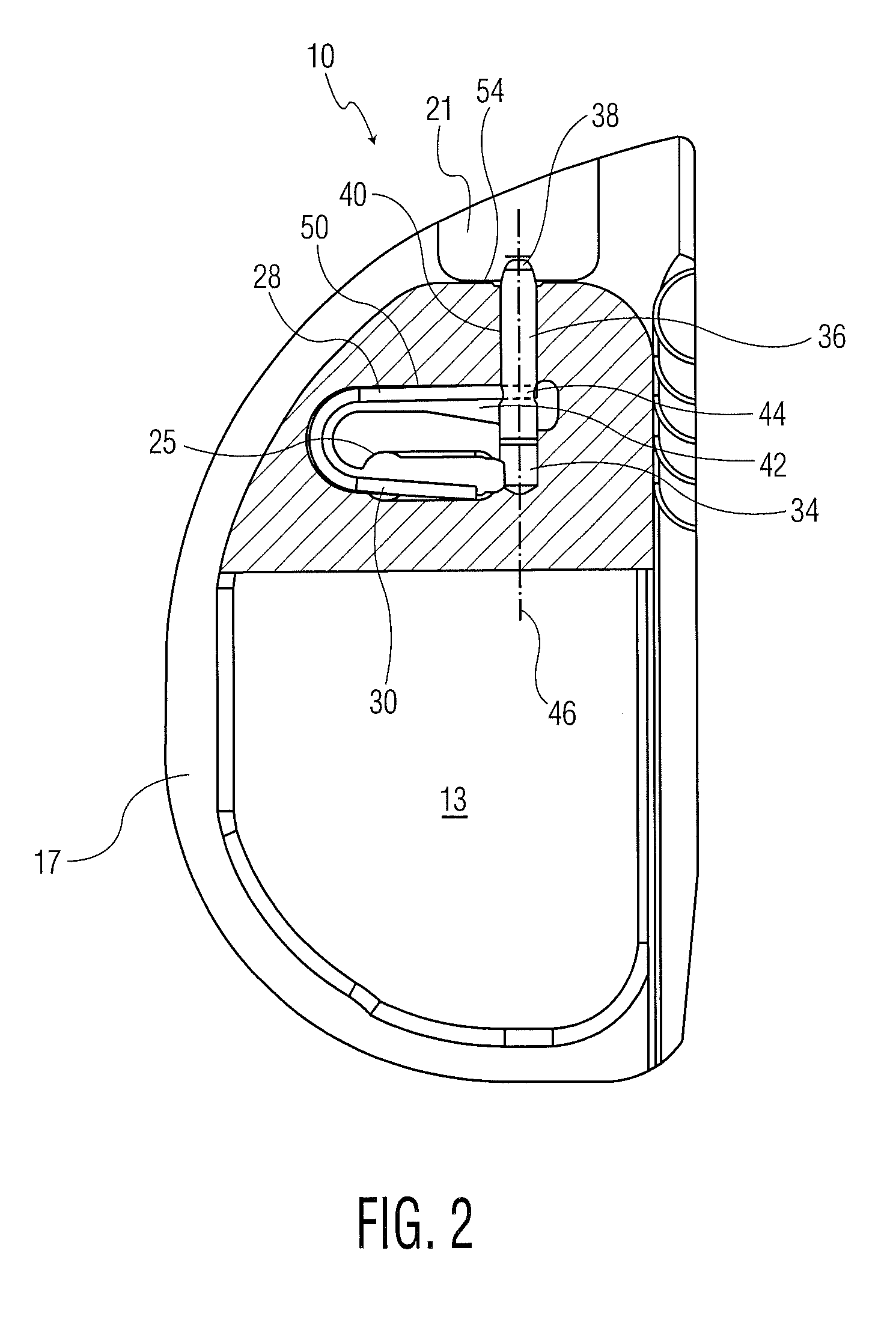Tibial insert locking mechanism
a locking mechanism and insert technology, applied in the field of tibial insert locking mechanism, can solve problems such as severe damage, and achieve the effect of preventing disassembly and dislodging during shipping and us
- Summary
- Abstract
- Description
- Claims
- Application Information
AI Technical Summary
Benefits of technology
Problems solved by technology
Method used
Image
Examples
Embodiment Construction
[0023]Referring to FIG. 1, there is shown a bottom view of a tibial bearing insert generally devoted as 10. The insert is preferably made from ultra high molecular weight polyethylene (UHMWPE). The view of insert 10 as shown in FIG. 1 is a bottom view of a single condylar portion of a prosthetic tibial implant. While only one condylar portion is shown, the bearing insert 10 may be comprised of two (medial and lateral) bearing inserts which can be separate or can be joined together along an anterior bridge portion (not shown). The proximally facing surface of the tibial implant, best seen in FIG. 5, contains the prosthetic condylar bearing surface adapted to engage a corresponding condyle on the prosthetic femoral component (not shown). The insert 10 is preferably mounted on a metal tibial baseplate, or tibial tray in any conventional manner.
[0024]As can be seen in FIG. 1, a distal surface 12 is formed on a boss 13 extending from a distally facing shelf surface 17 which extends aroun...
PUM
 Login to View More
Login to View More Abstract
Description
Claims
Application Information
 Login to View More
Login to View More - R&D
- Intellectual Property
- Life Sciences
- Materials
- Tech Scout
- Unparalleled Data Quality
- Higher Quality Content
- 60% Fewer Hallucinations
Browse by: Latest US Patents, China's latest patents, Technical Efficacy Thesaurus, Application Domain, Technology Topic, Popular Technical Reports.
© 2025 PatSnap. All rights reserved.Legal|Privacy policy|Modern Slavery Act Transparency Statement|Sitemap|About US| Contact US: help@patsnap.com



